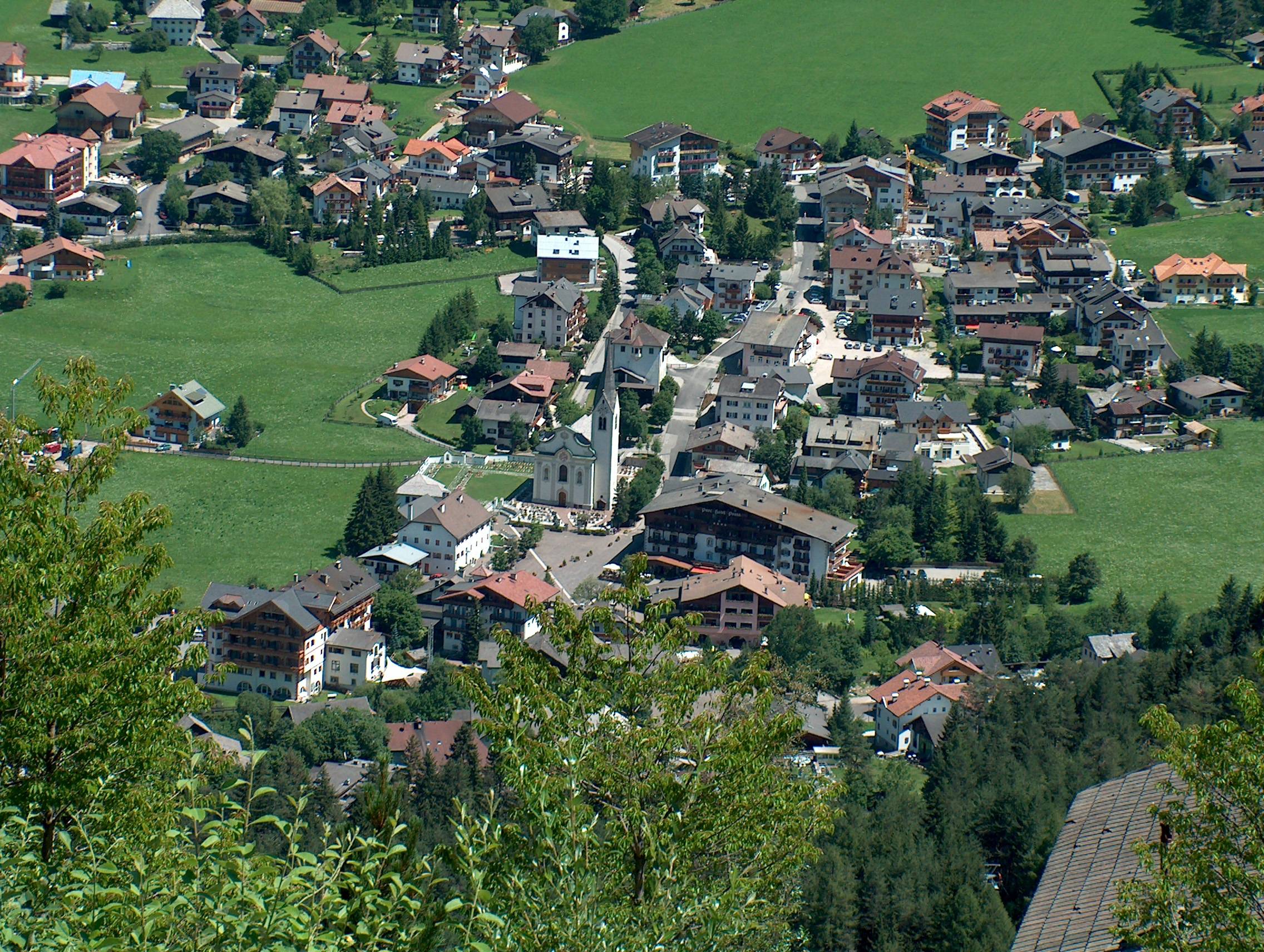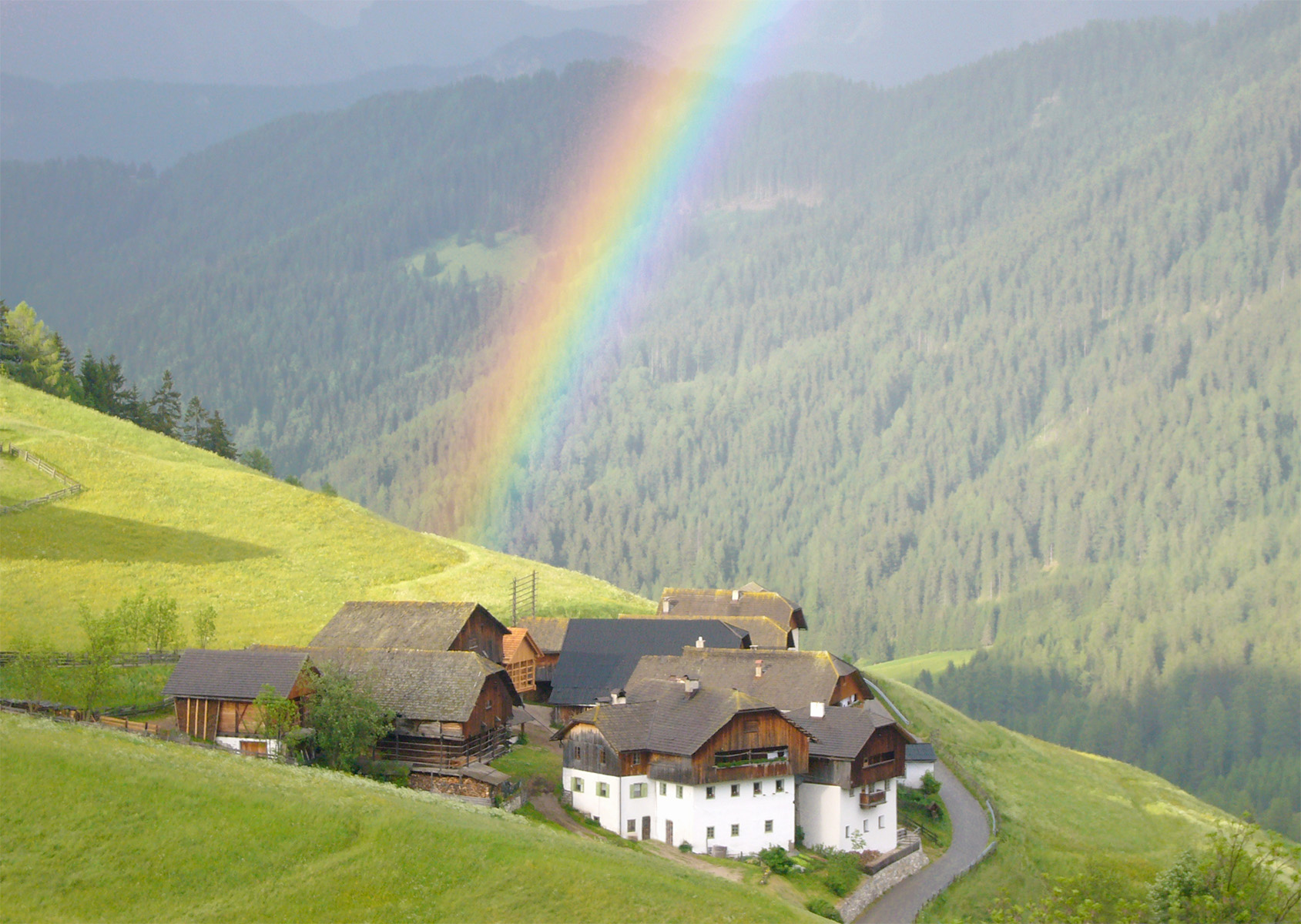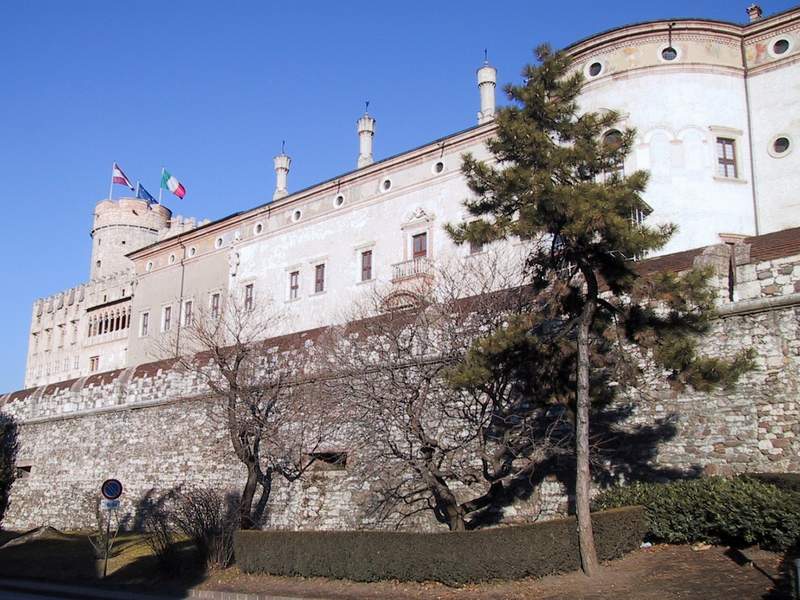|
Lüsen
Lüsen (; it, Luson ) is a ''comune'' (municipality) in South Tyrol, located about northeast of the city of Bolzano. Geography As of 30 November 2010, it had a population of 1,543 and an area of .All demographics and other statistics: Italian statistical institute Istat. Lüsen (Luson) borders the following municipalities: Brixen, Mareo, Natz-Schabs, Rodeneck, St. Lorenzen, and San Martin de Tor. Frazioni The municipality of Lüsen (Luson) contains the ''frazioni'' (subdivisions, mainly villages and hamlets) Berg (Monte), Petschied (Pezzè), Rungg (Ronco) and Flitt (Valletta). History Coat-of-arms The emblem represents a knight in armor, with plumes, lance in rest on a horse facing left, both of argent on gules. The emblem, adopted in 1967, resumes an arms used by the administration of the Bishops of ''Brixen'' since 1607. Society Linguistic distribution According to the 2011 census, 97.77% of the population speak German, 1.39% Italian and 0.83% Ladin Ladin may refer to: ... [...More Info...] [...Related Items...] OR: [Wikipedia] [Google] [Baidu] |
Mareo
Mareo ( it, Marebbe ; german: Enneberg ) is a ''comune'' (municipality) in South Tyrol in northern Italy, located about northeast of Bolzano. Geography As of 30 November 2010, it had a population of 2,911 and an area of .All demographics and other statistics: Italian statistical institute Istat. Mareo borders the following municipalities: Badia, Prags, Bruneck, Cortina d'Ampezzo, La Val, Lüsen, St. Lorenzen, San Martin de Tor and Olang. Frazioni The municipality of Mareo contains the ''frazioni'' (subdivisions, mainly villages and hamlets) Curt (Corte/Hof), Mantena, La Pli de Mareo, Pliscia (Plisa/Plaiken), Al Plan (San Vigilio/St. Vigil), Rina (Welschellen), and Longega (Zwischenwasser). History Coat of arms The shield is parted quarterly: the first part represents the Tyrolean Eagle on argent; the second the insignia of Austria. The third shows the head's dog of argent, with an or collar on gules, which represents the arms of the Lords of ''Ros'' that in thirteenth cen ... [...More Info...] [...Related Items...] OR: [Wikipedia] [Google] [Baidu] |
Natz-Schabs
Natz-Schabs (; it, Naz-Sciaves ) is a ''comune'' (municipality) in South Tyrol in northern Italy, located about northeast of the city of Bolzano. Pope Benedict XVI, whose maternal grandmother and great grandmother were born there, became an honorary citizen of the city in October 2011. Geography As of 30 November 2010, it had a population of 2,887 and an area of .All demographics and other statistics: Italian statistical institute Istat. Natz-Schabs borders the following municipalities: Brixen, Franzensfeste, Lüsen, Mühlbach, Rodeneck, and Vahrn. Frazioni The municipality of Natz-Schabs contains the ''frazioni'' (subdivisions, mainly villages and hamlets) Aicha (Aica), Natz (Naz), Raas (Rasa), Schabs (Sciaves) and Viums (Fiumes). History Coat-of-arms The emblem is party per fess of gules and argent. The upper part show the head of a heron, from which comes out gules flames in the bottom. It is the sign of the Lords of ''Sebs und Lyne'' who lived in the village since 114 ... [...More Info...] [...Related Items...] OR: [Wikipedia] [Google] [Baidu] |
Rodeneck
Rodeneck (; it, Rodengo ) is a ''comune'' (municipality) in South Tyrol in northern Italy. Geography Rodeneck borders the following municipalities: Kiens, Lüsen, Mühlbach, Natz-Schabs, St. Lorenzen and Vintl. In Rodeneck there are 7 municipal fractions: Vill, the largest and most populous fraction of the municipality, Nauders, Gifen, St. Pauls, Spisses, Ahnerberg and Fröllerberg, the municipal fraction with the fewest inhabitants History Origin The presence of non-local flint and quartz fragments suggests that the area was inhabited by hunters during the middle Stone Age (5000 BC). The discovery of middle Bronze Age forts dates permanent settlement to at least 1500 BC. The community was mentioned by name for the first time in the ''Actum Rotungun'' of 1050 AD as a place that made donations to the bishop. In the following centuries, the name has appeared in a variety of forms. Between 1140 and 1147 Bishop Hartmann of Brixen made the town an alod and bestowed it upon his mi ... [...More Info...] [...Related Items...] OR: [Wikipedia] [Google] [Baidu] |
San Martin De Tor
San Martin de Tor ( it, San Martino in Badia ; german: St. Martin in Thurn ) is a ''comune'' (municipality) in South Tyrol in northern Italy, located about northeast of the city of Bolzano. Geography As of 30 November 2010, it had a population of 1,726 and an area of .All demographics and other statistics: Italian statistical institute Istat. San Martin is home to the Istitut Ladin Micurà de Rü, which is tasked with preserving and promoting the Ladin culture and language. San Martin borders the following municipalities: Badia, Brixen, Corvara, La Val, Lüsen, Mareo, Santa Cristina Gherdëina, Sëlva and Villnöß. Frazioni The municipality of San Martin contains the ''frazioni'' (subdivisions, mainly villages and hamlets) of Antermëia (Antermoia/Untermoi), Lungiarü (Longiarù/Campill), and Picolin (Piccolino/Pikolein). History Coat-of-arms The shield is party per cross: the first quarter represents an argent tower with azure roof on sable; the second one is an arg ... [...More Info...] [...Related Items...] OR: [Wikipedia] [Google] [Baidu] |
Trentino-Alto Adige/Südtirol
it, Trentino (man) it, Trentina (woman) or it, Altoatesino (man) it, Altoatesina (woman) or it, Sudtirolesegerman: Südtiroler (man)german: Südtirolerin (woman) , population_note = , population_blank1_title = Official languages , population_blank1 = ItalianGerman (South Tyrol) , population_blank2_title = Other languages , population_blank2 = in some municipalities:Ladin MochenoCimbrian , demographics_type1 = Citizenship , demographics1_footnotes = , demographics1_title1 = Italian , demographics1_info1 = 93% , timezone1 = CET , utc_offset1 = +1 , timezone1_DST = CEST , utc_offset1_DST = +2 , postal_code_type = , postal_code = , area_code_type = ISO 3166 code , area_code = IT-32 , blank_name_sec1 ... [...More Info...] [...Related Items...] OR: [Wikipedia] [Google] [Baidu] |
South Tyrol
it, Provincia Autonoma di Bolzano – Alto Adige lld, Provinzia Autonoma de Balsan/Bulsan – Südtirol , settlement_type = Autonomous province , image_skyline = , image_alt = , image_caption = , image_flag = Flag_of_South_Tyrol.svg , flag_alt = , image_shield = Suedtirol CoA.svg , shield_size = x100px , shield_alt = Coat of arms of Tyrol , anthem = , image_map = Bolzano in Italy.svg , map_alt = , map_caption = Map highlighting the location of the province of South Tyrol in Italy (in red) , coordinates = , coordinates_footnotes = , subdivision_type = Country , subdivision_name = Italy , subdivision_type1 = R ... [...More Info...] [...Related Items...] OR: [Wikipedia] [Google] [Baidu] |
Comune
The (; plural: ) is a local administrative division of Italy, roughly equivalent to a township or municipality. It is the third-level administrative division of Italy, after regions ('' regioni'') and provinces (''province''). The can also have the title of ('city'). Formed ''praeter legem'' according to the principles consolidated in medieval municipalities, the is provided for by art. 114 of the Constitution of Italy. It can be divided into ''frazioni'', which in turn may have limited power due to special elective assemblies. In the autonomous region of the Aosta Valley, a ''comune'' is officially called a ''commune'' in French. Overview The provides essential public services: registry of births and deaths, registry of deeds, and maintenance of local roads and public works. Many have a '' Polizia Comunale'' (communal police), which is responsible for public order duties. The also deal with the definition and compliance with the (general regulator plan), a document ... [...More Info...] [...Related Items...] OR: [Wikipedia] [Google] [Baidu] |
Bolzano
Bolzano ( or ; german: Bozen, (formerly ); bar, Bozn; lld, Balsan or ) is the capital city of the province of South Tyrol in northern Italy. With a population of 108,245, Bolzano is also by far the largest city in South Tyrol and the third largest in historical Tyrol. The greater metro area has about 250,000 inhabitants and is one of the urban centers within the Alps. Bolzano is the seat of the Free University of Bozen-Bolzano, where lectures and seminars are held in English, German, and Italian. The city is also home to the Italian Army's Alpini High Command (COMALP) and some of its combat and support units. In the 2020 version of the annual ranking of quality of life in Italian cities, Bolzano was ranked joint first for quality of life alongside Bologna. Along with other Alpine towns in South Tyrol, Bolzano engages in the Alpine Town of the Year Association for the implementation of the Alpine Convention. The Convention aims to promote and achieve sustainable developme ... [...More Info...] [...Related Items...] OR: [Wikipedia] [Google] [Baidu] |
National Institute Of Statistics (Italy)
The Italian National Institute of Statistics ( it, Istituto nazionale di statistica; Istat) is the main producer of official statistics in Italy. Its activities include the census of population, economic censuses and a number of social, economic and environmental surveys and analyses. Istat is by far the largest producer of statistical information in Italy, and is an active member of the European Statistical System, coordinated by Eurostat. History The Italian National Institute of Statistics (IT ISTAT) was founded in compliance with Law Decree no. 1162 of 9 July 1926 as the Central Institute of Statistics (IT Istituto Centrale di Statistica) in order to replace the General Statistics Division of the Ministry for Agriculture (now known as Ministero delle politiche agricole alimentari, forestali e del turismo). The direction of the institution, which was subordinated to the head of state, was given to Corrado Gini. The ISTAT institute, with a staff of about 170 workers, was supp ... [...More Info...] [...Related Items...] OR: [Wikipedia] [Google] [Baidu] |
Brixen
Brixen (, ; it, Bressanone ; lld, Porsenù or ) is a town in South Tyrol, northern Italy, located about north of Bolzano. Geography First mentioned in 901, Brixen is the third largest city and oldest town in the province, and the artistic and cultural capital of the valley. It is located at the confluence of the Eisack and Rienz rivers, north of Bolzano and south of the Brenner Pass, on the Italy-Austrian border. It is flanked on the eastern side by the Plose and Telegraph (Monte Telegrafo) mountains (2,504 m) and on the western side by the Königsanger (Monte Pascolo) (2,436 m) mountain. Brixen is especially known as a major skiing resort (the Plose). Other activities include hydroelectric power, orchards, and vineyards. ''Frazioni'' ''Frazioni'' / incorporated villages: Afers (Eores), Albeins (Albes), Elvas, Gereuth, Karnol, Klerant (Cleran), Kranebitt (Costa d'Elvas), Mahr (La Mara), Mairdorf, Mellaun (Meluno), Milland, Pairdorf (Perara), Pinzagen (Pinzago), Plabach, Rutz ... [...More Info...] [...Related Items...] OR: [Wikipedia] [Google] [Baidu] |
Frazione
A ''frazione'' (plural: ) is a type of subdivision of a ''comune'' (municipality) in Italy, often a small village or hamlet outside the main town. Most ''frazioni'' were created during the Fascist era (1922–1943) as a way to consolidate territorial subdivisions in the country. In the autonomous region of the Aosta Valley, a ''frazione'' is officially called an ''hameau'' in French. Description Typically the term ''frazioni'' applies to the villages surrounding the main town (''capoluogo'') of a ''comune''. Subdivision of a ''comune'' is optional; some ''comuni'' have no ''frazioni'', but others have several dozen. The ''comune'' usually has the same name of the ''capoluogo'', but not always, in which case it is called a ''comune sparso''. In practice, most ''frazioni'' are small villages or hamlets, occasionally just a clump of houses. Not every hamlet is classified as a ''frazione''; those that are not are often referred to as ''località'', for example, in the telephone boo ... [...More Info...] [...Related Items...] OR: [Wikipedia] [Google] [Baidu] |
Argent
In heraldry, argent () is the tincture of silver, and belongs to the class of light tinctures called "metals". It is very frequently depicted as white and usually considered interchangeable with it. In engravings and line drawings, regions to be tinctured ''argent'' are either left blank, or indicated with the abbreviation ''ar''. The name derives from Latin ''argentum'', translated as "silver" or "white metal". The word ''argent'' had the same meaning in Old French ''blazon'', whence it passed into the English language. In some historical depictions of coats of arms, a kind of silver leaf was applied to those parts of the device that were argent. Over time, the silver content of these depictions has tarnished and darkened. As a result, it can sometimes be difficult to distinguish regions that were intended as "argent" from those that were " sable". This leaves a false impression that the rule of tincture has been violated in cases where, when applied next to a dark colour, ... [...More Info...] [...Related Items...] OR: [Wikipedia] [Google] [Baidu] |




